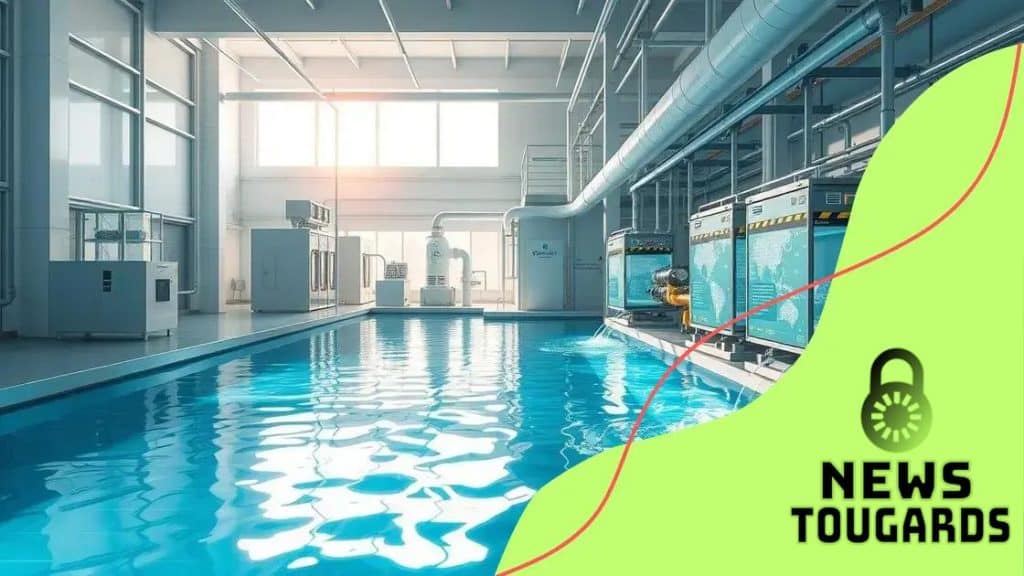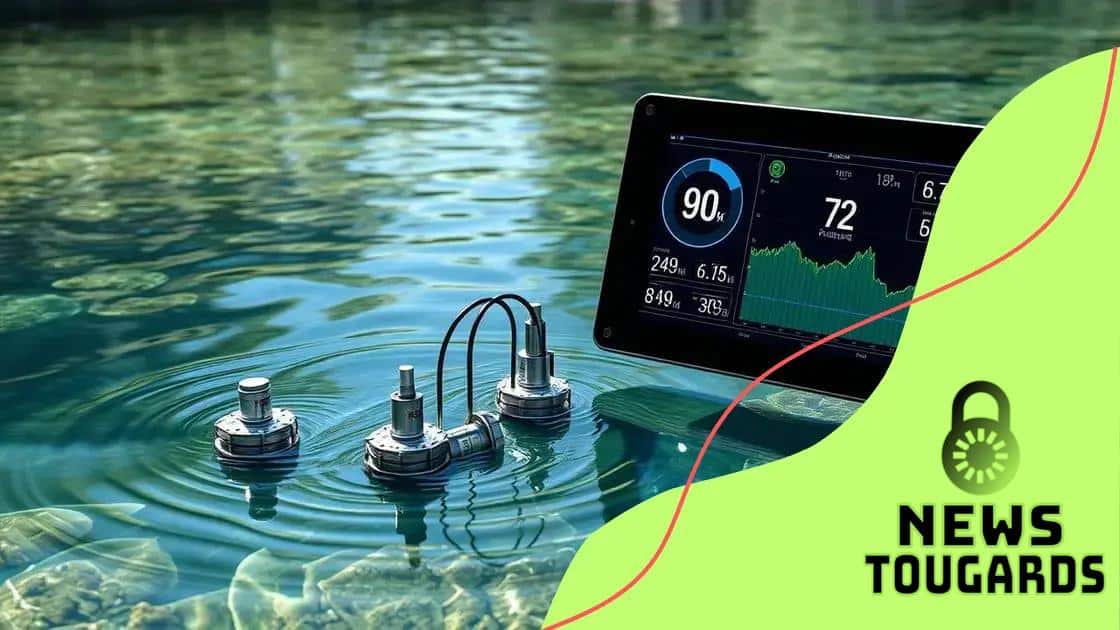Emerging technologies in clean water solutions

Emerging technologies in clean water solutions significantly enhance public health by reducing waterborne diseases, improving child health, and promoting sustainable community development through efficient water management.
Emerging technologies in clean water solutions are changing the landscape of water accessibility and quality globally. Have you ever wondered how these advancements can improve your community’s water supply?
Innovative filtration methods
The world is seeing innovative filtration methods that transform how we clean and access water. These techniques help ensure that our water supply is not only safe but also sustainable. In this section, we will delve into some of the most effective strategies currently being developed.
Types of Filtration Technologies
Many new methods are making waves in the filtration space. Each has its unique benefits and applications. Here are a few notable technologies:
- Membrane filtration: This method uses semi-permeable membranes to separate impurities from water.
- Activated carbon filtration: This approach effectively removes chlorine, sediment, and volatile organic compounds.
- Biological filtration: Utilizing living plants and organisms to purify water, this method also contributes to improved ecosystem health.
Each of these techniques plays a crucial role in clean water solutions, catering to different needs and settings. Innovations in nanofiltration allow for even more refined filtration, removing smaller particles than traditional methods.
Advantages of Innovative Filtration Methods
The benefits of these advanced filtration systems are significant. They lead to improved water quality and reduced environmental impact. Here are some of the key advantages:
- Increased efficiency in contaminant removal.
- Lower operational costs over time.
- Flexibility in installation and applications.
Moreover, these methods often require less energy and produce less waste. For example, membrane filtration works effectively with less power compared to conventional treatments. As we continue to face water scarcity issues, adopting such innovative filtration methods becomes ever more important.
Exploring these technologies not only highlights their effectiveness but also encourages us to adopt more sustainable practices in our communities. By investing in cleaner filtration techniques, we are taking a significant step toward a healthier future for everyone. The advancements in this field inspire hope for achieving global clean water access.
The role of nanotechnology in water treatment
Nanotechnology is playing a significant role in transforming how we treat water. This cutting-edge technology utilizes tiny particles at the nanoscale to enhance water treatment processes. With the ability to improve efficiency and effectiveness, nanotechnology is paving the way for safer drinking water.
Key Applications of Nanotechnology
There are several vital applications of nanotechnology in water treatment, each contributing to cleaner water solutions.
- Nanoscale filtration: This method allows for the removal of microorganisms and heavy metals that traditional filtration cannot achieve.
- Adsorption techniques: Nanomaterials can capture contaminants more effectively, ensuring the purification of water based on their unique properties.
- Advanced oxidation processes: Nanoparticles can accelerate oxidation reactions, breaking down pollutants in water.
Integrating nanotechnology into water treatment systems offers innovative solutions to common water quality challenges. For instance, using nanoparticles in filtration can lead to higher flow rates while maintaining effectiveness. As these particles can target specific contaminants, once limiting the efficacy of earlier treatments, users enjoy better outcomes.
Benefits of Using Nanotechnology
The adoption of nanotechnology in water treatment brings numerous benefits. Not only does it improve the quality of water, but it also reduces energy consumption during the treatment process. This energy efficiency is vital in areas facing water scarcity. Additionally, nanotechnology has the potential to lower maintenance costs and extend the lifespan of treatment systems.
As the world faces increasing water quality concerns, capitalizing on innovations like nanotechnology can provide promising solutions. These methods not only ensure access to safe drinking water but also contribute to environmental and public health improvements.
Smart water monitoring systems

Smart water monitoring systems are revolutionizing how we track and manage water resources. These technologies use advanced sensors to provide real-time data on water quality and usage. With the growing concerns about water scarcity, these systems play a crucial role in ensuring safe and sustainable water management.
Components of Smart Water Monitoring Systems
A typical smart water monitoring system includes various key components that work together. These include:
- Sensors: Devices that collect data on water quality, such as pH levels, turbidity, and contaminant presence.
- Data loggers: Equipment that stores the information gathered by sensors for analysis and reporting.
- Communication networks: Systems that transmit data from sensors to centralized databases or user devices.
By integrating these components, smart systems can detect changes quickly, enabling prompt responses to any water quality issues. This real-time analysis helps to ensure that water is safe for consumption and use.
Benefits of Smart Water Monitoring
Utilizing smart water monitoring systems offers several benefits. One major advantage is the ability to reduce water waste. By identifying leaks in pipelines or inefficiencies in usage, communities can save significant amounts of water. Furthermore, these systems enhance the safety of drinking water by providing accurate and timely data on contaminants.
Another benefit is improving regulatory compliance. With continuous monitoring, water utilities can ensure they meet safety standards set by health authorities. The cost savings from efficient management and reduced operational risks make smart water monitoring appealing for municipalities and utilities alike.
As cities continue to grow, the demand for effective water management solutions increases. Smart water monitoring systems not only address current challenges but also prepare us for future water needs. Investing in these technologies is a step toward creating resilient water infrastructures that can withstand environmental changes.
Rainwater harvesting techniques
Rainwater harvesting techniques are essential for capturing and using rainwater effectively. By utilizing these methods, communities can enhance their water supply, especially in areas with limited access to clean water. This approach not only conserves water but also promotes sustainability.
Methods of Rainwater Harvesting
There are several effective methods for collecting rainwater, each suited for different environments and needs. These include:
- Rooftop collection: This method uses roofs to catch rainwater, directing it into storage tanks.
- Surface runoff retention: In this technique, rainwater that flows across the ground is collected in ponds or basins.
- French drains: These are trenches filled with gravel, designed to collect and direct rainwater away from surfaces.
Using rooftop collection is one of the most common methods, as it allows homeowners to gather water directly from their buildings. From there, the harvested rainwater can be filtered and used for irrigation, washing, or even indoor use with proper treatment.
Benefits of Rainwater Harvesting
Implementing rainwater harvesting brings numerous benefits to communities. It helps reduce dependency on municipal water systems, which can be particularly useful during dry seasons. By collecting rainwater, households can cut down on their water bills significantly. Additionally, using harvested rainwater can alleviate pressure on local water resources and promote environmental sustainability.
Moreover, rainwater harvesting contributes to flood management. By capturing rainwater, we can reduce runoff and mitigate flooding during heavy rains. This technique also helps recharge groundwater reserves, ensuring a more resilient water supply.
As we face increasing water scarcity globally, adopting rainwater harvesting techniques is a practical solution for ensuring sustainable water usage. These systems empower individuals and communities to manage their water resources effectively and responsibly.
Impact of clean water technologies on public health
The impact of clean water technologies on public health is profound and widespread. Access to clean water is fundamental for preventing diseases and promoting overall well-being. Countries and communities that implement these technologies see significant improvements in their health outcomes.
Reduction of Waterborne Diseases
Implementing clean water technologies greatly reduces the incidence of waterborne diseases. Traditional water sources can harbor pathogens that lead to illnesses. In contrast, advanced purification methods, such as filtration and disinfection, effectively remove harmful microorganisms from drinking water. These methods ensure that water is safe for consumption, leading to healthier populations.
Improvement in Child Health
Clean water technologies play a crucial role in protecting vulnerable populations, particularly children. Access to clean drinking water helps prevent malnutrition and stunted growth associated with water-related illnesses. Studies show that communities with improved water quality experience lower rates of infant mortality and better overall health in children.
- Access to sanitation: Clean water technologies often include components that improve sanitation, further enhancing public health.
- Hygiene practices: With clean water available, communities are more likely to adopt proper hygiene practices, which further reduces disease transmission.
Moreover, when individuals have reliable access to clean water, they are more likely to invest time in education and economic activities instead of dealing with health issues. This positive trend fosters community development and enhances quality of life.
Economic Benefits of Clean Water
Investing in clean water technologies is also beneficial for the economy. Healthier populations lead to reduced healthcare costs, as fewer people suffer from preventable diseases. The economic burden of treating waterborne illnesses can be staggering, and by improving water quality, communities can redirect funds toward development projects.
Ultimately, the benefits of clean water technologies extend far beyond individual health; they contribute to the uniform growth and stability of societies. By ensuring access to safe drinking water, we create a foundation for healthier communities and stronger economies.
FAQ – Frequently Asked Questions about Clean Water Technologies
How do clean water technologies reduce diseases?
Clean water technologies remove harmful pathogens from drinking water, significantly lowering the risk of waterborne illnesses.
What are the benefits of clean water for children’s health?
Access to clean water helps prevent malnutrition and supports better growth and development in children.
How do these technologies impact local economies?
Investing in clean water technologies reduces healthcare costs, allowing communities to reallocate funds towards development and infrastructure.
Why is clean water essential for sustainable development?
Clean water ensures a healthy population, promotes hygiene, and supports economic growth, all contributing to sustainable community development.





